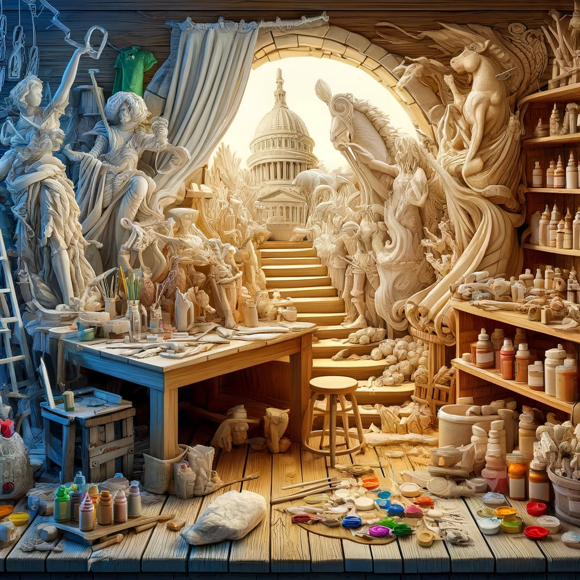In the realm of art, there exists a humble medium that often goes unnoticed, yet possesses an extraordinary capacity to transform the ordinary into the extraordinary. Papier-mâché, with its unassuming origins and seemingly simple techniques, has captivated the imaginations of artists and artisans for centuries. From its humble beginnings as a craft for children to its elevation as a fine art form, papier-mâché has traversed a remarkable journey, proving its versatility and enduring appeal.
The origins of papier-mâché can be traced back to ancient China, where it was used to create intricate figurines and decorative objects. Over time, the craft spread to other parts of the world, gaining popularity in Europe and eventually reaching the Americas. Initially, papier-mâché was primarily used for utilitarian purposes, such as creating masks and armor. However, its artistic potential soon became evident, and artists began to explore its creative possibilities.
One of the earliest pioneers of papier-mâché art was James Abbott McNeill Whistler, the renowned American painter. In the late 19th century, Whistler experimented with papier-mâché, creating a series of delicate reliefs that showcased his mastery of the medium. His work inspired other artists to explore the artistic potential of papier-mâché, and the craft began to gain recognition as a legitimate art form.
In the 20th century, papier-mâché experienced a resurgence of popularity, as artists embraced its versatility and expressive qualities. Surrealists like Salvador Dalí and Max Ernst employed papier-mâché to create dreamlike sculptures that defied conventional notions of form and representation. Pop artists like Claes Oldenburg and Jeff Koons used papier-mâché to create oversized everyday objects, challenging the boundaries between art and consumerism.
Today, papier-mâché continues to thrive as an art form, attracting artists from diverse backgrounds and disciplines. Its accessibility and adaptability make it an ideal medium for both emerging and established artists, allowing them to explore a wide range of themes and ideas. Papier-mâché sculptures can be found in galleries, museums, and public spaces around the world, captivating audiences with their ingenuity, beauty, and thought-provoking nature.
The enduring appeal of papier-mâché lies in its ability to transcend limitations and transform the ordinary into the extraordinary. From its humble beginnings as a craft for children to its elevation as a fine art form, papier-mâché has demonstrated its versatility, adaptability, and capacity to inspire creativity. As artists continue to explore the boundless possibilities of this remarkable medium, papier-mâché is poised to continue its remarkable journey, captivating imaginations and enriching the world of art for generations to come.
